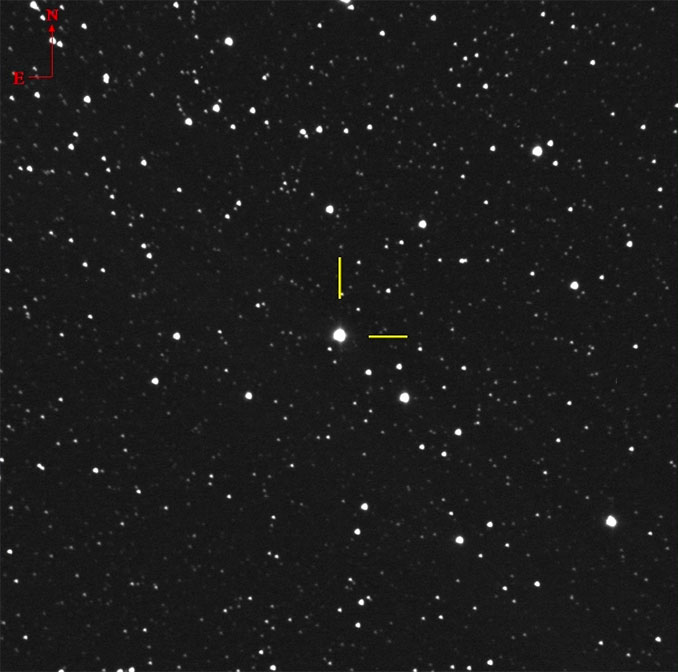
There’s a ‘new star’ – a classical nova – on show among the stars of the far-northern constellation of Cassiopeia. Nova Cas 2021 was discovered on 18 March shining at around magnitude +9.6, but it appears to have brightened rapidly to around magnitude +7.5 on 19 March.
Nova Cas 2021 should be visible through a pair of 10

Cassiopeia is circumpolar (never sets) from UK shores; as soon as darkness falls between about 7.30pm and 7.45pm GMT, the location around M52 lies some 33 to 37 degrees above the north-western horizon. Over the course of the evening the constellation descends towards the horizon, reaching its lowest point due north shortly before midnight. By the time skies start to lighten with the onset of nautical twilight (when the Sun lies between 12 and six degrees below the horizon) at about 4.45am GMT, Nova Cas 2021 will have climbed to an altitude of around 40 degrees above the north-north-eastern horizon.

Nova Cas 2021 was discovered by Yuji Nakamura of Japan on 18 March at about 10h UT, when it shone at around magnitude +9.6. He shot four 15-second frames with a 135mm, f/4 lens coupled to a CCD camera (a set-up which provided a limiting magnitude of +12) and further reported that no object was seen at the transient object’s position on frames shot with the same equipment on 14 March.
Just hours later, professional astronomers from the National Astronomical Observatory of Japan swung into action, obtaining a spectrum of the object with the 3.8-m Seimei Telescope at Okayama Observatory and photometry through a 0.4-m telescope at Kyoto University. The spectrum revealed the tell tale features of a classical nova, with emission lines of the Balmer series, N-III 4640 and He-II 4686, and He-I emission lines with P-Cyg profiles. They further found and identified lines N-II 5679, C-III 5695 and Paschen emission lines. The position of Nova Cas 2021 precisely coincides with that of the W UMa-type eclipsing variable star CzeV3217, which lies at a distance of about 5,500 light years.

Novae are short-lived outbursts from aged binary star systems involving gas piling up onto a white dwarf from a companion star, igniting a thermonuclear reaction on the white dwarf and an explosion on its surface that is violent enough to be seen across the Galaxy. We see the sudden appearance of a ‘new’ (nova is Latin for ‘new’) star.
The behaviour of many novae is notoriously unpredictable and so observations of Nova Cas 2021 are highly encouraged, especially as it appears to have been discovered at an early stage.
For observers who wish to make estimates of the nova’s brightness to construct a light-curve, check out this chart and sequence from the AAVSO. A spectrum of the nova can be seen here http://www.kusastro.kyoto-u.ac.jp/~kentagch/atel/pnvj2324.pdf
There’s more detailed information available at Astronomer’s Telegram, and at the Central Bureau for Astronomical Telegrams.
